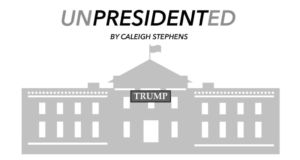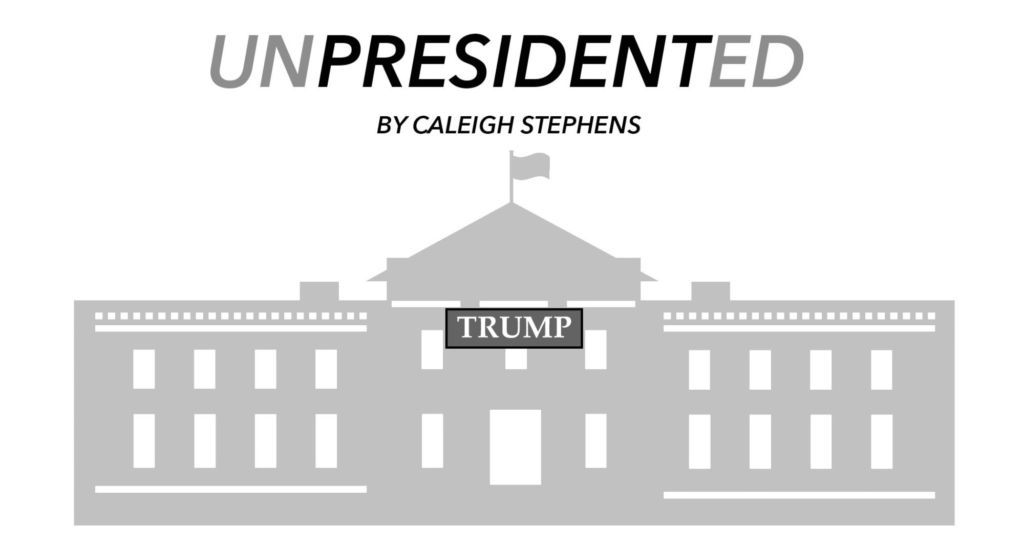
“UnPresidented” is a new column discussing the transition and first days of the Trump administration.
On Saturday, the sun will finally set on the first hundred days of a Donald Trump presidency. The significance of the marker may depend on who you ask, whether Trump or the White House. While Trump described the occasion as “not very meaningful” in a Sunday interview with the Associated Press, his office sent out a press release on Tuesday declaring all the numerous accomplishments of the administration, claiming that “In office, President Trump has accomplished more in his first 100 days than any other President since Franklin Roosevelt.”
Trump is right in the assertion that he didn’t achieve anywhere near as much as FDR in his first three months. Indeed, the idea of the time period as a marker for presidential success emerged from the tenure of FDR. The first days of Roosevelt’s term were marked with significant legislation and the formation of the New Deal as we know it. Just two days after his inauguration, Roosevelt declared a “Bank Holiday,” closing all banks across the nation and after a week or so reopening only those that met regulations specified by the days-old Emergency Banking Act. Banking crisis somewhat averted and public faith in financial institutions nurtured, Roosevelt went on to pass more pieces of legislation including the first welfare-type program and other federal banking regulations including the Glass-Steagall Act. Roosevelt also created public works programs such as the Civilian Conservation Corps and eventual Works Progress Administration, both of which employed many in the worst throes of the Great Depression. All in all, the special session of Congress that extended the first 100 days of Roosevelt’s first term helped cement a whole new way of governing and dealing with the crises at hand.
It is important to note that Roosevelt had a couple of things going his way. For one, he had a clear Democratic majority in Congress, one that he could count on to get his bills passed. Also, in such a crisis as the Great Depression, desperate times called for desperate measures. Roosevelt does stand out as an anomaly, but then again Trump also ran on a platform of change and currently enjoys Republican majorities in both the House and Senate, enough so that his Supreme Court nominee was pushed through amid Democratic filibuster.
Since those historic days of Roosevelt’s presidency, the idea of the “first 100 days” has lingered on in the modern presidency. Now, journalists use the date as a chance to look back and grade the president on his first attempts at leading the country, undoubtedly increasing the pressure to achieve a lot in these first days. Despite this, however, a study by the University of Utah found that modern Congresses aren’t any more productive in first 100 days than they are the rest of the year.
The Tuesday press release sent out by the White House attempted to quantify Trump’s first days, claiming that he has taken the most action of any modern president. And certainly, in numerical terms, that may seem to be the case. While Trump’s 28 laws pale in comparison to Truman’s 55, it still stacks far above the usual 10-20. Trump has also signed 30 executive orders, surpassing the highest in modern presidential history. As far as volume, Trump seems to be doing okay. However, in his mind, it seems that an increase in the number of actions directly correlates with an increase in actual change. That is not the case here. While some executive orders have sparked tremendous action (namely the twice-tried travel ban), the majority of his executive actions revolve around asking departments to review past pieces of legislation.
The better scorecard for Trump’s first 100 days is not, then, one based on numbers, but one based on his own action plan. And of the actions he pledged to take, very, very few have gone into effect. Trump won smaller battles with actions including an executive order that stopped White House employees from ever lobbying for a foreign government and his withdrawal from the Trans-Pacific Partnership, but on larger ticket issues such as the infamous border wall, leaving NAFTA, creating any sort of health care reform and successfully implementing a travel ban, among many others, Trump has fallen very short.
And it shows in the polls. A recent NBC News and Wall Street Journal Poll found that 45 percent of Americans think that Trump has done a poor job these first 100 days. Compare that number to 21 percent who responded the same way in 2009 after 100 days of Barack Obama as president. These poll numbers reveal that while he may believe himself to be doing a great job, America doesn’t quite agree. Trump’s overall approval rate, according to the same poll, is at a mere 40 percent, the lowest job-approval rate of any president at this point in modern history. Though this is only the start of his presidency, these numbers don’t indicate a well-functioning administration that has gained the trust of the populace.
There is more to governing than passing as many laws as one can. This is something Trump must realize as he continues on. The first 100 days of a presidency are not nearly enough to judge a president’s future success. Trump may very well start constructing his border wall in the first 200 or 500 or 1000 days of his presidency. And there is much to be said for implementing policies slowly and with great preparation. However, that doesn’t seem to be Trump’s path forward. All of Trump’s actions so far have shown no progress toward his ultimate goals and only serve to shine light on how much he is struggling with the presidency.

















